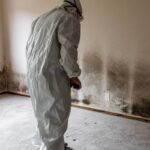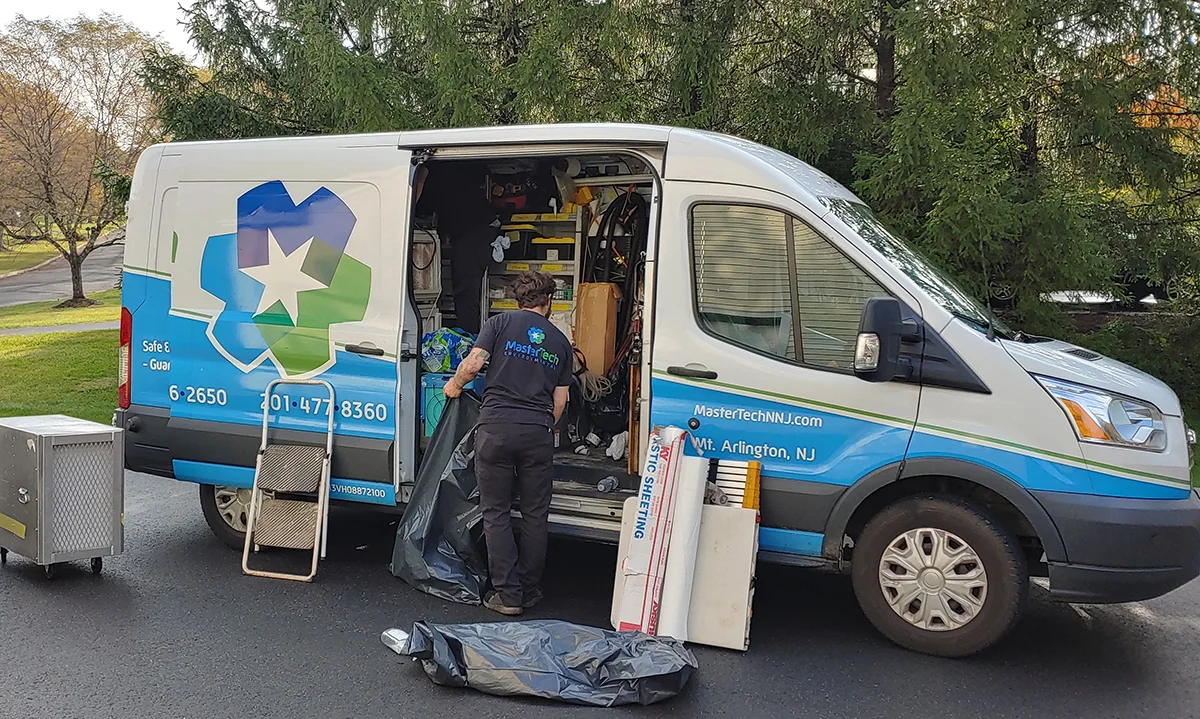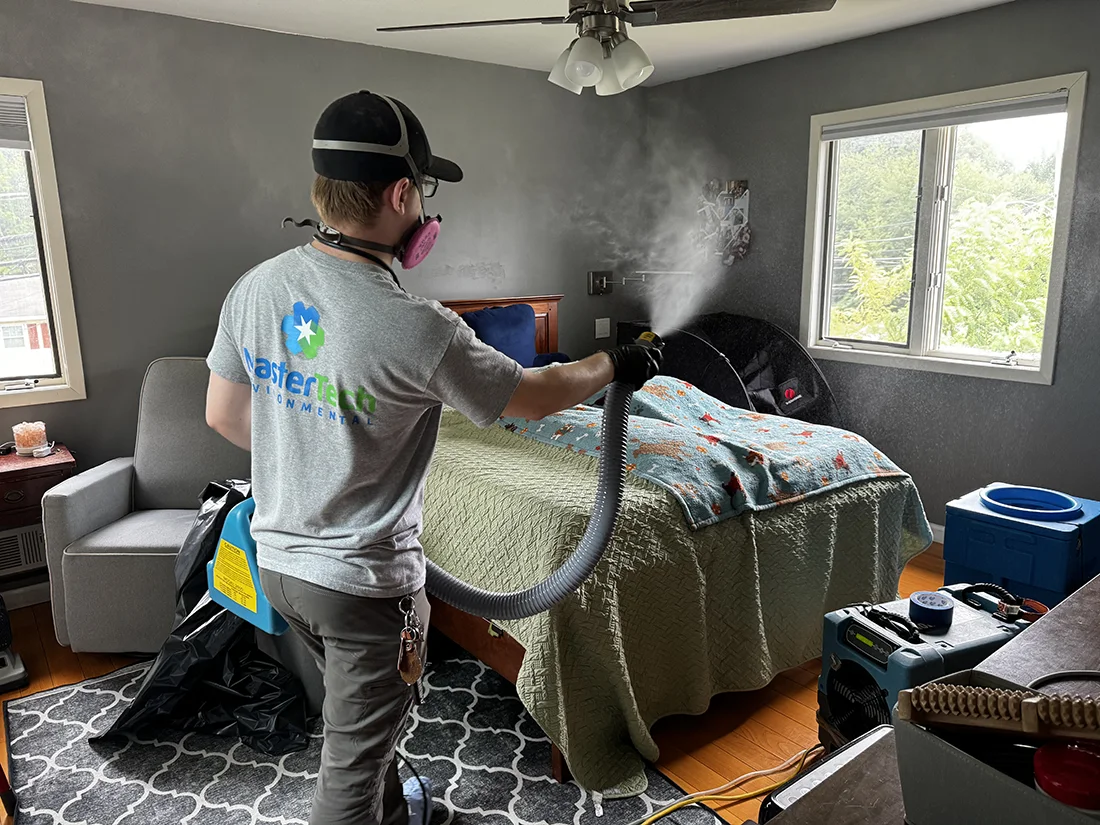Mold growth can cause serious problems in homes and businesses, especially in Laguna Hills, where the climate can create ideal conditions for hidden moisture. Many properties have unseen mold that compromises air quality and structural integrity. Professional mold inspections are essential because they accurately detect mold issues early, preventing costly damage and health risks.
An expert inspection goes beyond a simple visual check by using specialized tools to find hidden mold and moisture. This thorough approach helps property owners address the problem before it worsens. In locations like Laguna Hills, relying on certified professionals ensures mold concerns are handled safely and effectively.
Finding mold early through a professional inspection protects both property value and occupant health. Knowing exactly where mold exists and how much of an issue it poses allows for targeted, efficient remediation. That makes professional mold inspections a critical step for anyone living or working in Laguna Hills. For more details on reliable assessment services, see Laguna Hills Mold Testing & Inspections.
Why Mold Inspections Are Critical in Laguna Hills, CA
Mold growth in Laguna Hills requires careful attention because of specific environmental and health factors. Early detection through professional mold inspections can prevent serious damage and health risks linked to hidden or untreated mold.
Understanding the Risks of Undetected Mold
Undetected mold can cause a variety of health problems, especially respiratory issues like allergies, asthma, and other breathing difficulties. Prolonged exposure can worsen these conditions or create new ones.
In homes, mold can weaken structural components by breaking down surfaces and building materials. This damage is often invisible until it becomes severe, leading to costly repairs.
Professional mold inspections identify hidden mold colonies and sources of moisture to prevent further damage and health hazards. This is especially important in areas where mold growth is common due to climate.
Unique Local Factors Leading to Mold Problems
Laguna Hills’ moderate climate and proximity to the coast create a moist environment ideal for mold growth. The area’s humidity and occasional rains can increase indoor moisture levels, promoting mold development on walls, ceilings, and in hidden spaces.
Many homes in this Orange County city may have inadequate ventilation or outdated plumbing, which further raises the risk of mold. Additionally, leaks or water intrusion following storms can create ideal conditions for mold colonization.
These local environmental factors require specific attention through frequent and thorough mold inspections by certified specialists familiar with Laguna Hills’ unique conditions.
Consequences of Delayed Inspections
Delaying mold inspections in Laguna Hills can lead to increased health risks from prolonged exposure. Undiagnosed mold can aggravate allergies and respiratory problems, posing greater difficulties for children, elderly residents, and those with compromised immune systems.
From a property perspective, mold that is left untreated can cause irreversible damage to structures, decrease property value, and increase restoration costs. Early professional inspections allow for timely mold removal and prevent extensive damage and expenses.
Prompt action minimizes risk and supports safer indoor air quality, making mold inspections essential in this area. For professional services, residents can rely on Laguna Hills mold inspection providers.
Health Impacts of Indoor Mold Exposure
Indoor mold exposure can lead to a range of health effects, especially when spores or fragments are inhaled or come into contact with the skin. The severity and type of symptoms depend on individual sensitivity, the amount of mold, and the duration of exposure.
Common Symptoms and Health Concerns
Mold exposure often triggers allergic reactions such as sneezing, nasal congestion, itchy eyes, and skin irritation. These symptoms resemble those of other common allergens but persist in mold-contaminated environments.
Other health concerns include throat irritation, coughing, and wheezing. These irritants can exacerbate existing respiratory issues or cause general discomfort. Although not everyone reacts, sensitive individuals may experience more pronounced effects.
Mold can also cause fungal infections in rare cases, especially among people with weakened immune systems. Identifying and addressing mold growth early prevents worsening symptoms and potential complications.
Links Between Mold and Respiratory Conditions
Mold is a known irritant and allergen that directly affects the respiratory system. Exposure can worsen conditions like asthma, often triggering attacks or increasing their frequency.
Inhaled mold spores can cause inflammation in the airways, leading to symptoms such as breathlessness, chest tightness, and persistent coughing. This inflammation can become chronic if exposure continues.
Research shows mold exposure contributes to the development or aggravation of other respiratory illnesses, especially when mold growth remains unchecked indoors.
Risks for Sensitive Groups and Pre-Existing Conditions
Certain groups face higher risks from indoor mold. These include children, the elderly, and those with asthma or other chronic respiratory diseases. Their immune systems or lung function may be less able to handle mold exposure.
Allergic individuals can experience more severe reactions, including intense respiratory distress and prolonged symptom duration. Immunocompromised people may also develop fungal infections not common in others.
For these groups, professional mold inspections and removal are vital to minimize health risks and maintain safe indoor air quality. Ignoring mold issues can result in persistent health problems and reduced quality of life.
For more details on health effects, visit Mold in the Home by the Los Angeles County Department of Public Health.
Typical Causes and Signs of Mold Growth
Mold growth in homes most often results from persistent moisture sources and unchecked humidity. Early detection relies on recognizing physical signs like visible mold or musty odors that indicate potential hidden water damage or leaks.
Water Leaks and Plumbing Leak Sources
Water leaks are a primary cause of mold growth in Laguna Hills homes. Plumbing leaks, whether from broken pipes, faulty fittings, or appliance connections, provide constant moisture that supports mold development. Roof leaks also contribute by allowing rainwater to seep into walls and ceilings, often going unnoticed until mold damage becomes extensive.
Past water damage, such as from flooding or slow leaks behind walls, creates ideal conditions for mold. Inspectors emphasize identifying even small leaks quickly to prevent visible mold growth and structural compromise. Addressing plumbing or roof leaks promptly limits mold spread and reduces remediation costs.
Musty Odors and Visible Mold Damage
A persistent musty odor is a strong indicator of hidden mold growth, especially in areas with poor ventilation. The smell often resembles damp, mildew-like scents and may be present even without visible signs.
Visible mold damage appears as black or dark spots, fuzzy patches, or discoloration on surfaces like walls, ceilings, and floors. Such mold growth commonly clusters near water-damaged areas or places prone to leaks. Recognizing these signs early allows for timely inspection and mold remediation, preventing further damage to property and health.
Role of Condensation and Humidity Issues
Condensation occurs when warm, moist air contacts cooler surfaces, leading to water droplets that encourage mold formation. Common sites include windowsills, crawl spaces, and attics in Laguna Hills homes where temperature differences frequently occur.
High indoor humidity, especially above 60%, supports mold growth by providing continuous moisture. Poor ventilation worsens this by trapping humid air indoors. Controlling humidity through proper ventilation, dehumidifiers, and insulation reduces the potential for mold growth related to condensation and dampness.
For professional mold inspection and detailed assessment of these issues, see Laguna Hills mold testing and inspections.
Professional Mold Inspection Process Explained
The mold inspection process in Laguna Hills includes thorough assessments of indoor air quality, mold spore presence, and the root causes of moisture problems. Inspectors use specialized equipment and techniques to detect hidden mold and evaluate environmental conditions contributing to mold growth.
Visual Assessment and Air Quality Testing
The inspection begins with a detailed visual assessment of the property. Inspectors look for signs of visible mold, water damage, and areas where mold is likely to develop, such as basements, crawl spaces, and bathrooms.
Air quality testing follows, measuring levels of mold spores and microbial volatile organic compounds (MVOCs) that contribute to indoor mold odors and health risks. This involves collecting air samples and comparing them to outdoor baseline levels.
Air testing helps identify invisible mold contamination that may not yet be visible. It also supports decisions about necessary remediation and odor removal to ensure safe, mold-free indoor air.
Advanced Mold Testing Techniques
Professional mold testing combines surface sampling, bulk sampling, and air sampling to detect and identify mold species. Techniques like culture plates and DNA analysis provide specific information about the types of mold present.
Infrared cameras and moisture meters are often used during testing to locate hidden moisture that fosters mold growth behind walls or under floors.
This comprehensive approach allows inspectors to distinguish between harmless mold and potentially toxic species, guiding targeted remediation efforts and improving indoor environmental safety.
Identifying Moisture Problems and Underlying Causes
Identifying moisture sources is critical to effective mold control. Inspectors assess plumbing leaks, roof damage, HVAC system issues, and areas with poor ventilation.
They also evaluate humidity levels that may support sustained mold growth. Moisture mapping helps pinpoint problem spots requiring repair.
By addressing underlying causes, such as faulty drainage or high indoor humidity, professionals prevent mold recurrence after remediation and protect the home’s structural integrity. This step is essential for long-term mold management in Laguna Hills homes.
For professional mold inspections and advanced testing tools in Laguna Hills, services like those at Tradewinds Restoration offer specialized solutions.
Dangers of Toxic Mold and Asbestos in Homes
Toxic mold and asbestos pose serious threats to both health and property. Exposure can cause respiratory problems and structural damage, making early detection and professional removal critical in Laguna Hills homes.
Recognizing Black Toxic Mold
Black toxic mold, often referred to as Stachybotrys chartarum, thrives in damp, poorly ventilated areas. It appears as a dark greenish-black substance with a slimy texture.
Exposure to black toxic mold can trigger symptoms such as chronic coughing, sneezing, eye irritation, and in severe cases, neurological issues. It releases mycotoxins, which are harmful spores that exacerbate health problems in sensitive individuals.
Identifying black mold requires careful inspection, especially in hidden areas like behind walls or under floors. Because it looks similar to other harmless molds, professional mold testing is essential for accurate identification and effective remediation.
Asbestos Risks During Mold Remediation
Asbestos is a fibrous mineral commonly found in building materials used before the 1980s. When disturbed during mold remediation, asbestos fibers can become airborne, posing inhalation hazards.
Inhaling asbestos fibers can cause serious illnesses including asbestosis, lung cancer, and mesothelioma. Proper asbestos abatement must be performed before or alongside mold removal to prevent these health risks.
Professional inspectors assess the presence of asbestos before mold remediation begins. Certified abatement specialists then handle asbestos removal using controlled procedures to minimize fiber release, ensuring home safety in Laguna Hills.
Comprehensive Solutions After Mold Inspection
After a mold inspection, the next steps involve targeted actions to eliminate mold presence and address any underlying moisture issues. These solutions focus on both removing visible mold and restoring affected areas to prevent future growth.
Effective Mold Removal and Remediation
Mold removal begins with identifying all contaminated areas, including those hidden behind walls or under floors. Professionals use specialized equipment and cleaning agents to remove mold colonies thoroughly.
Mold remediation goes beyond removal by addressing the cause of mold growth. This includes improving ventilation, fixing leaks, and controlling indoor humidity. Certified technicians often follow industry standards to ensure safe mold containment and prevent spores from spreading during the process.
The goal is complete eradication of mold while protecting building materials when possible. Surfaces that are severely damaged or porous may require removal and replacement to fully eliminate mold risks.
Mold Cleanup and Water Damage Restoration
Mold cleanup involves sanitizing surfaces once mold is removed to minimize health risks. This process targets spores and allergens left behind after remediation.
Water damage restoration is critical because mold thrives where moisture remains. It includes drying wet areas using dehumidifiers and air movers and repairing plumbing or roofing issues that caused leaks.
Effective restoration prevents mold from recurring by eliminating excess moisture sources. The combination of cleanup and restoration maintains a healthier indoor environment and preserves the structural integrity of the property.
For mold remediation services in Laguna Hills, see mold inspection and removal options offered by Tradewinds Restoration.
Prevention Tips and Improving Indoor Air Quality
Effective control of indoor moisture and airborne particles plays a critical role in reducing mold growth and maintaining healthy air quality. Using specific tools and practices helps limit conditions favorable to indoor mold and ensures a safer living environment.
Moisture Control and Dehumidifiers
Moisture is the primary cause of mold growth. Controlling humidity levels below 60% is essential to prevent mold spores from thriving indoors. Regularly inspecting for leaks and promptly repairing any water damage reduces the risk of hidden mold.
Dehumidifiers are effective in maintaining optimal humidity levels, especially in damp areas like basements or bathrooms. They remove excess moisture from the air, helping to stabilize humidity and prevent condensation on walls and ceilings. Choosing a dehumidifier with an appropriate capacity for the space ensures efficient moisture control.
Laguna Hills homes benefit from regular moisture monitoring using advanced detection tools to identify hidden dampness early and avoid mold proliferation.
The Role of Air Purifiers and HEPA Vacuums
Air purifiers with HEPA filters improve indoor air quality by capturing airborne mold spores and other allergens. These devices reduce the concentration of mold spores suspended in the air, lowering respiratory risks.
HEPA vacuums are equally important for keeping surfaces free of mold spores and dust. Using HEPA-filtered vacuums during cleaning prevents mold spores from re-circulating indoors. It is recommended to vacuum carpets, upholstery, and floors regularly to reduce potential mold reservoirs.
Together, air purifiers and HEPA vacuums provide a targeted approach to trapping microscopic particles that conventional filters miss, thereby enhancing air quality in Laguna Hills homes.
Maintaining Long-Term Protection
Long-term mold prevention requires consistent upkeep of moisture control and air quality measures. This includes routine cleaning to remove dust and using UV air purifiers where possible to inhibit mold growth.
Ventilation also plays an important role. Ensuring adequate airflow in all rooms, especially kitchens and bathrooms, helps reduce stagnant moisture. Installing exhaust fans and opening windows regularly supports air circulation.
A well-maintained HVAC system fitted with quality filters further safeguards indoor environments by controlling humidity and filtering out mold spores. Laguna Hills residents may also consider professional mold inspections to identify and address potential risks before they worsen.
For detailed air quality assessment and mold testing in Laguna Hills, certified professionals offer accurate mold detection and remediation services.
Selecting Qualified Mold Inspection Services in Laguna Hills, CA
Choosing the right mold inspection service requires careful attention to the company’s credentials and its standing within the community. Professional qualifications, proven experience, and positive customer feedback are essential factors that indicate reliability and expertise.
Key Qualifications and Certifications to Look For
Qualified mold inspectors often hold certifications from recognized organizations such as the National Association of Mold Remediators and Inspectors (NAMRI) or the Indoor Air Quality Association (IAQA). These certifications ensure inspectors understand safe sampling methods and contamination limits.
It is important the service uses advanced testing equipment like moisture meters and air quality monitors. Companies like Enkay Engineering emphasize technical expertise paired with industry-standard tools to provide thorough inspections.
Additionally, licensing through California’s state agencies reflects compliance with local health and safety regulations. Laguna Hills residents benefit most from services that prioritize continuous training and updated certifications to stay current with evolving standards.
Reputation, Customer Satisfaction, and Local Expertise
A company’s reputation in Laguna Hills and nearby areas, including Yorba Linda, is a strong indicator of service quality. Positive reviews and customer satisfaction ratings demonstrate consistent reliability.
Look for providers known for clear communication and responsive customer service. For example, 24/7 Restoration has a history of quick response times and free estimates, which enhance trust in urgent situations.
Local experience matters since inspectors familiar with Southern California’s climate and building structures are better equipped to identify hidden mold sources. Checking platforms like Yelp for top-rated mold inspectors near Laguna Hills helps ensure a provider with proven local expertise.
Frequently Asked Questions
Mold inspections identify hidden mold growth and prevent health hazards. They improve air quality by detecting spores and contaminants indoors. The process involves visual checks, moisture readings, and sample collection. Certified professionals ensure accurate detection and safe removal. Ignoring mold can cause structural damage and respiratory issues. Thorough assessments include comprehensive testing and licensed expertise.
What are the key signs indicating the need for a professional mold inspection?
Visible mold growth on walls, ceilings, or floors signals the need for an inspection. Persistent musty odors often indicate hidden mold. Water damage, leaks, or unexplained allergy symptoms in occupants also warrant professional evaluation.
How can mold inspections improve indoor air quality and health?
Mold inspections identify airborne spores that affect respiratory health. Removing mold reduces allergens and irritants in the home. This lowers risks of asthma attacks, allergies, and other respiratory problems, fostering a safer living environment.
What is the typical process involved in conducting a mold inspection?
Inspectors begin with a visual examination of suspected areas. Moisture levels are measured using specialized tools. Samples of air and surfaces may be collected to identify mold types. Findings guide necessary remediation steps.
Why is it important to hire certified professionals for mold detection and remediation?
Certified professionals follow established safety and testing protocols. They have the expertise to locate hidden mold and assess its severity. Proper remediation prevents recurrence and safeguards occupant health.
What are the potential risks of neglecting mold issues in residential properties?
Unchecked mold can cause structural deterioration and damage to building materials. It poses serious health risks including respiratory infections and allergic reactions. Mold aggravates asthma and other lung conditions.
How can one ensure they are getting a thorough and accurate mold assessment?
Hiring licensed and experienced inspectors ensures comprehensive testing. They use advanced equipment for moisture detection and mold sampling. Clear communication of results and recommendations confirms the inspection’s quality.
For more details on mold inspection services in Laguna Hills, see Mold Inspection in Laguna Hills, CA.









